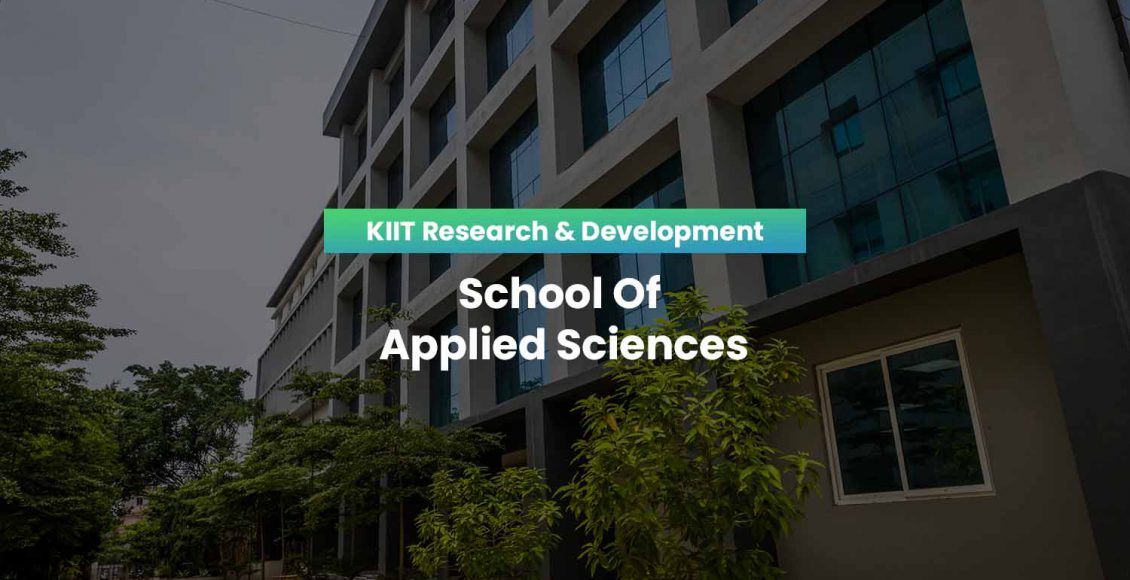School of Applied Sciences (Aug – Sep 2022)
Journal Papers
- Mahato, R., Das, M., Sen, S.S.S. & Nandkeolyar, R. (2022), Hydromagnetic mixed convection unsteady radiative Casson fluid flow towards a stagnation-point with chemical reaction, induced magnetic field, Soret effect, and convective boundary conditions. Heat Transfer-Wiley. https://doi.org/10.1002/htj.22733
Abstract
This article presents the two-dimensional mixed convective MHD unsteady stagnation-point flow with heat and mass transfer on chemically reactive Casson fluid towards a vertical stretching surface under the influence of induced magnetic field, thermal radiation, viscous dissipation, heat absorption, and Soret effect with convective boundary conditions. The problem is solved numerically by shooting technique and analyzed the effect of pertinent flow parameters on the velocity, induced magnetic field, temperature, and concentration distributions through graphs. The skin friction coefficient, rate of heat, and mass transfer are computed numerically for both assisting and opposing flows.
- Tripathy, R.R., Singha, S. & Sarkar, S. (2022). A review on bio-functional models of catechol oxidase probed by less explored first row transition metals, Journal of Coordination Chemistry, DOI: 10.1080/00958972.2022.2122053 (I.F: 1.756)
Abstract
Catecholase activity is a biological process in which type-3 active site of a copper enzyme, named catechol oxidase, catalyzes oxidation of o-diphenolic substrates to the corresponding o-quinones coupled with reduction of molecular dioxygen into water. Presence of a hydroxo bridged dicopper(II) core in the structure of catechol oxidase is responsible for its catalytic activity. Interest in mimicking the physicochemical properties of catechol oxidase led to synthesis of a number of model complexes utilizing other transition metal ions, however, the number of studies is remarkably less compared to their copper analogues. This review focuses on catecholase activity of the first row transition metals other than copper to highlight relatively less recognized synthetic and functional models. It includes (i) presentations of some of the proposed mechanisms, (ii) structural descriptions of the relevant catalysts and an attempt to establish a structure–function correlation and (iii) a comparative discussion on catalytic efficiencies of homo and heterometallic complexes. In the summary, this review may provide inspiration for the development of new catalysts and for a more effective approach to draw structure–activity correlations.
- Padhy, B. P., Mishra, A. and Nanda, S.: (2022), Approximation of Fourier series of functions in Besov Space by Borel Means, Journal of the Indian Math. Soc., 89(3-4), 373-385. https://doi.org/10.18311/jims/2022/26422 (IF: 0.544)
Abstract
In the present article, a result on degree of approximation of Fourier series of functions in the Besov space by Borel mean is established.
Ph.D. Degree Awarded
Student’s Name: Dr. Sneha Shriparna Satpathy

Supervisor’s Name: Dr. Chadana Mohanty, School of Applied Sciences
Thesis Title: Cerium oxide nanoparticles mediated combination therapy for colon cancer: In silico to in vitro approaches
Abstract Despite several medical trials, the clinical prognosis of colon cancer remains unsatisfactory due to disease recurrence. There seems to be a critical need to find new treatment modalities that will improve the disease’s therapy results with minimal to no side effects. Plant-based drugs will facilitative assist the chemo drug 5-Fluorouracil (5 FU) to resolve the challenge of drug resistance.To this end, the in-silico study aims to analyze the binding affinity of different phytochemicals in comparison with 5FU with the wild as well as a mutated form of the targeted protein thymidine phosphorylase (TYPH) and thymidylate synthase (TYMS) to enhance the therapeutic strategy. We found that berbamine (BERB) showed the most potent binding affinity with both the targeted proteins (i.e, TYPH and TYMS) for colon cancer therapy. Further, we formulated the cerium oxide nanoparticle (CONPs) loaded with 5FU (5FU-CONPs) and best-docked phytocompound i.e., BERB (BERB-CONPs) and characterize the CONPs by different analytical techniques. Drug entrapment and release were studied by spectrophotometric method. Furthermore, we studied their therapeutic potential against HT-29 colon cancer cell lines in vitro. Different CONPs treated cells were analysed by western blot study to investigate the drug-induced molecular basis of apoptotic pathways. The in vitro analysis advocated that delivering BERB and 5FU in CONPs system in combination was comparatively more effective than native combination under in vitro condition with time due to its enhanced free radical scavenging activity, better cellular uptake and that further resulted in the reduction of cell viability by inducing apoptosis and most importantly, the combined treatment of 5FU with the phytochemical BERB in the CONPs delivery system lowered the dosage administration of 5FU without compromising its therapeutic effectiveness of 5FU while limiting its side effects and toxicity. Hence according to the overall conclusion, this study will look for a powerful phytochemical that might be used as a single agent or in combination with 5FU in CONPs formulation to treat colon cancer in near future.
Student’s Name: Dr. Satya Narayan Sahu

Supervisor’s Name: Dr. Chandana Mohanty and Dr. Rojalin Sahu , School of Applied Sciences
Thesis Title: Boerhavia diffusa plant extract and its impact on mutated proteins involved in nephrotic syndrome: An in silico and in vivo approach
Abstract
Nephrotic syndromes (NS) is a heterogeneous autosomal recessive renal disorder. This occurs due to the mutation of different podocytic genes. Almost all patients are resistant to steroid treatment. To avoid side effects due to steroid administration, natural products may be a useful source for novel drug discovery against NS. This study was focused to investigate the potency of Boerhavia diffusa (B.diffusa) plant extracts against NS. Here, we have performed experiments to identify the potency of B.diffusa plant extract against NS. The overall observations demonstrated that B.diffusa plant extracts showed potent curative behaviour as compared to prednisolone and it may use as a potential therapeutics against NS in near future.
Student’s Name: Dr. Biswajit Mallick

Supervisor’s Name: Dr. Prakash Kumar Sahu, School of Applied Sciences (Mathematics)
Thesis Title: Numerical Methods for Solving Differential Equations and Integral Equations
Abstract
The mathematical modelling of various problems in science and engineering gives rise to differential equations and integral equations of both integer and fractional order. Closed form solutions or exact solutions for such equations are only attainable in very few circumstances and on very restricted domains. So, there is an increase in the importance of using efficient numerical methods for solving them. This thesis is devoted to the computation of approximate solutions of differential and integral equations of both integer and fractional order using various numerical methods. The goal is to categorize the selected methods and assess their accuracy and efficiency. We discuss challenges faced by researchers in this field, and we emphasize the importance of interdisciplinary effort for advancing the study on numerical methods for solving differential and integral equations. A numerical method based on orthonormal Bernoulli’s polynomials together with their operational matrices is applied for solving fractional order differential equations of Lane–Emden type. The preliminaries of fractional calculus are presented and operational matrices of fractional derivative are constructed in this work. Convergence analysis of orthonormal Bernoulli’s polynomials is proposed. Later, the fractional Lane–Emden differential equation converted into a system of algebraic equations by applying some suitable collocation points and this system can be simplified by an appropriate numerical method. Next an iterative method, which is a new formulation of the Adomian decomposition method, has been used to solve time-fractional partial differential equations (TFPDEs) with proportional delays. This proposed new technique defines the non-linear term using the new formula of Adomian polynomials and is independent of λ. It does not require any discretization, perturbation, or any restrictive parameters. It is shown that the proposed method converges rapidly to the exact solutions. The Volterra integral equations with proportional delay (VIEPD) have been solved by using Sinc-collocation method. This approach transforms the integral equation to an easily solvable system of algebraic equations. Error bound for this method has been presented. Due to exponential convergence rate, Sinc collocation method is very applicable to solve VIEPD. The obtained approximate solutions are compared with their corresponding exact solutions as well as with the solutions of some other numerical methods available in the literature and the behaviour of the solutions are shown in graphical forms. Numerical results discussed in this work suggest that these techniques are reliable, convenient, and attractive for computational use in modern times. Illustrative examples are discussed to show the validity and applicability of the present methods.


